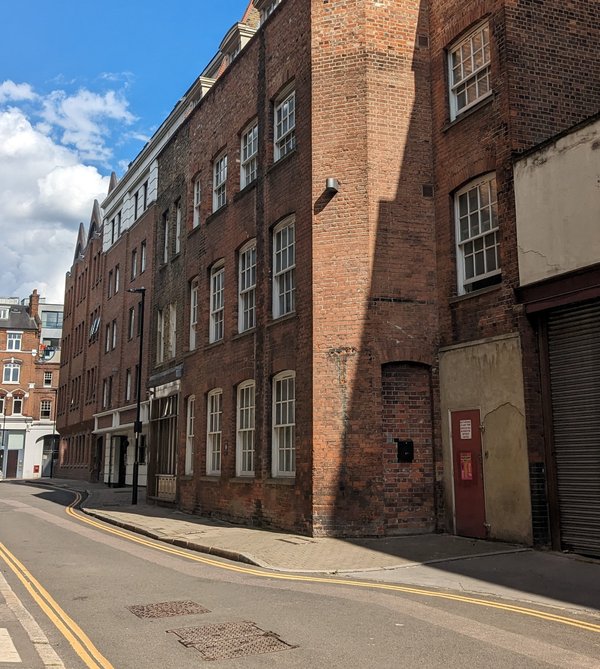The tools are important too
This post was written by Seth Kennedy
Many horological workshops contain old tools. It seems to go with the territory. There is something about using a hand tool that has already been around for a century or more. It brings questions, wondering whose hands have previously worked with this object over several generations and what timepieces were they working on?
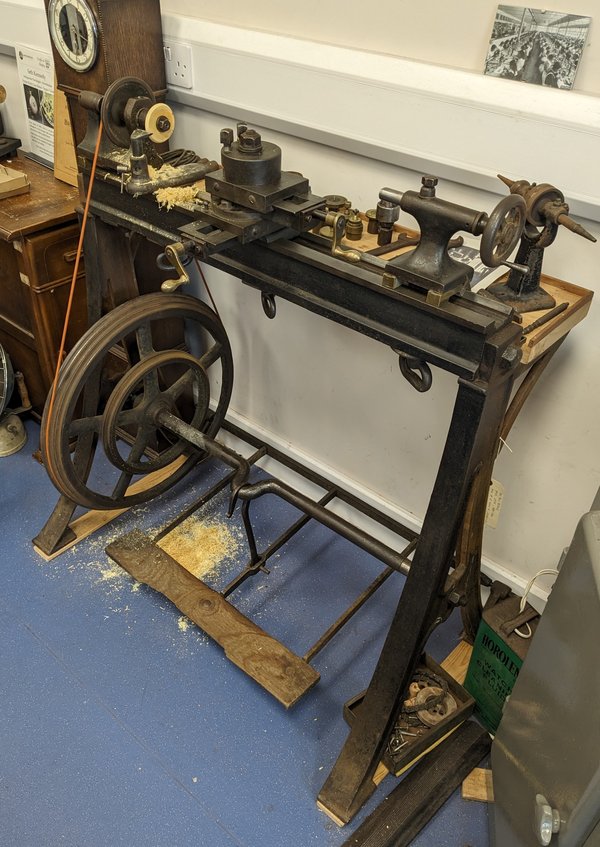
With thanks to a fellow restorer, I recently became custodian of something a bit larger than a saw or a file. It’s a plain lathe by Pfiel most likely made in the late 19th century. Pfiel & Co were tool makers and retailers with a large shop and warehouse on St John Street in Clerkenwell. There are a few details about these lathes that make them distinguishable and so it is possible they were actually cast and machined in London to Pfiel specifications.
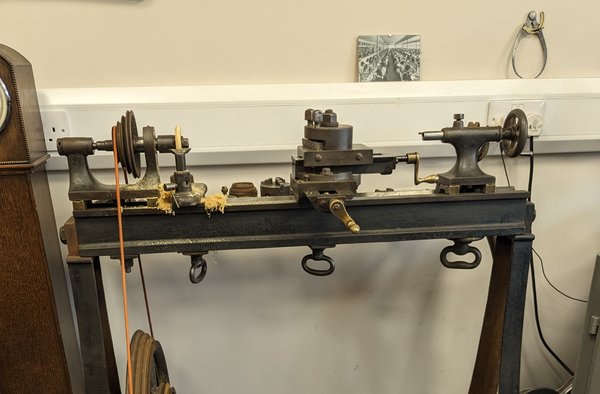
The centre height of the spindle is 3.5”, or at least it was, since on this example some home-made brass spacers have been added under the head and tailstock so that larger parts could be turned. These spacers fit the flat front and veed back surfaces of the lathe bed.
The treadle board itself is an incredible survivor, showing its wear of a century of use. Also remaining, though unusable, is a very old gut line that was previously used to connect flywheel to spindle.
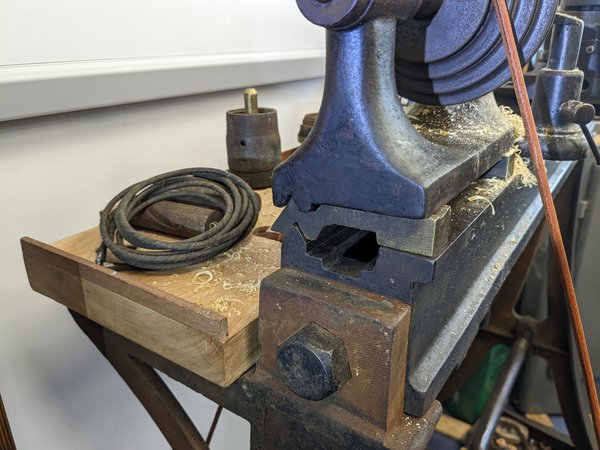

What makes this lathe particularly special is that its history is known. It came from the workshop of Daniel Parkes, a fourth generation clockmaker/restorer who was active in Clerkenwell until retirement in 1989. He was a founder member of the AHS and some of his tools are on display in the museum of The Worshipful Company of Clockmakers. Parkes used only traditional equipment and methods in the restoration of fine English clocks of the 17th and 18th century golden age.
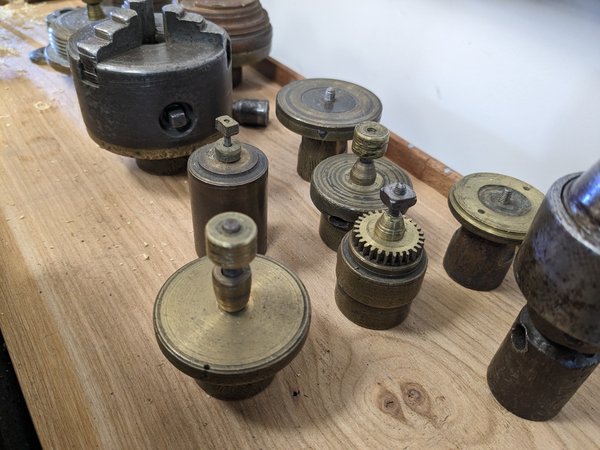
The lathe could have come from his family’s workshop on Spencer Street, which was destroyed by a V1 bomb in June 1944 but from which he salvaged some equipment. Or it might have already been in the workshops that Parkes then moved to on Brisset Street, where a partnership was formed with A. & H. Rowley, also a firm with long Clerkenwell roots.
Either way, someone in one of those businesses needed a lathe in around 1890 and so walked down the road to the Pfiel shop and bought this one. After Parkes’s retirement it went to Mike McCoy, then to Matthew Hopkinson and then recently to my workshop.
It has now had some cleaning, oiling, a hidden strengthening plate added to the treadle, a new leather belt fitted and a new shelf added as the original had gone missing.
Tools are meant to be used and so, after perhaps 30 years of slumber it will now occasionally be put into action again, for turning boxwood chucks used in watch case making and other light tasks.
